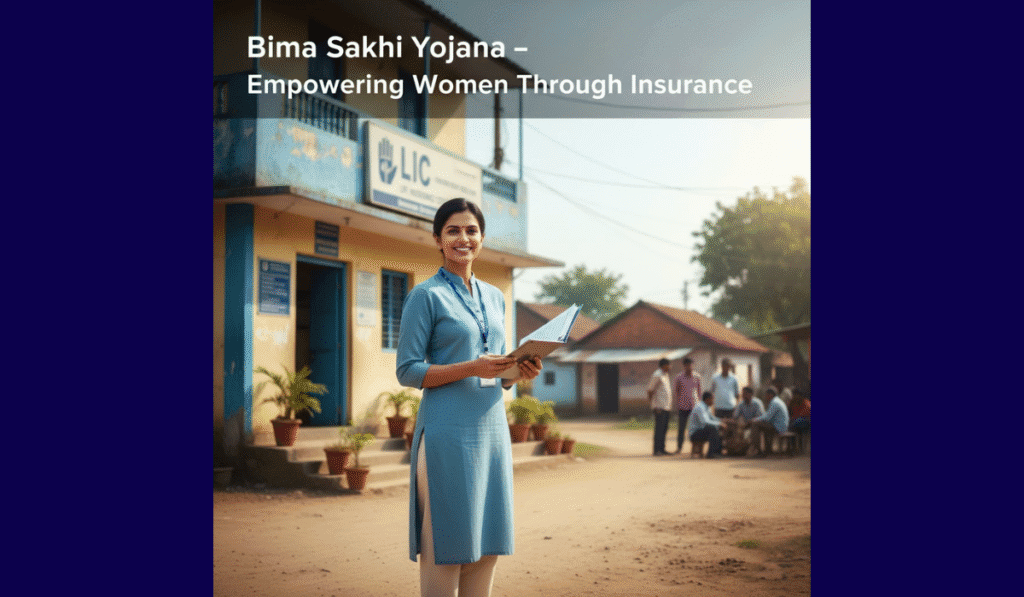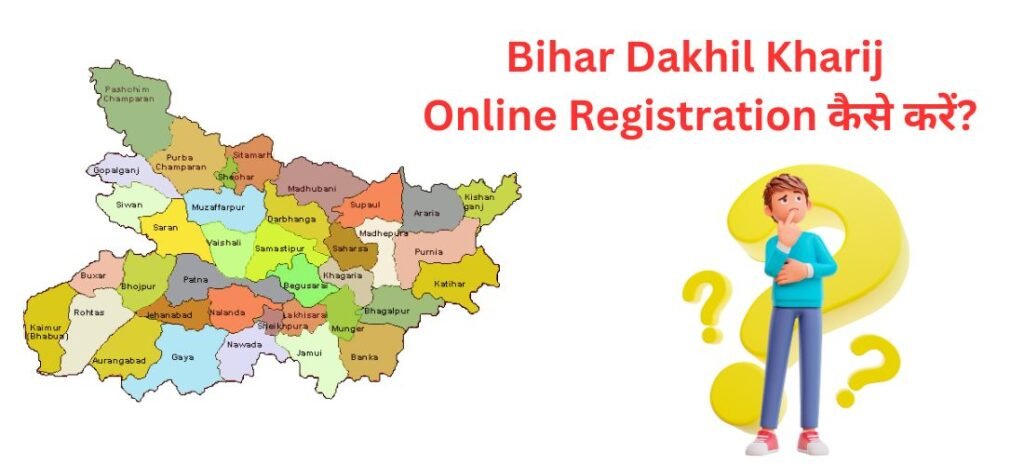
The Bima Sakhi Yojana is a targeted program aimed at promoting women as insurance distributors and increasing insurance coverage in rural/semi-urban India. The program provides short-term stipends, a process of training, and an income generation opportunity through agency work. This program is an interesting case study for students, practitioners, policy makers and/or aspiring micro-business owners, in relation to financial inclusion and women’s livelihood programs.
What is the Bima Sakhi Yojana?
Bima Sakhi Yojana is a stipend agency scheme initiated by the Life Insurance Corporation of India (LIC) to select, train and develop women candidates to be LIC agents under a defined three-year engagement model. The programme provides monthly stipends during the first months of engagement, classroom and field training, and operational support to enable the recruits to transition into commission-earning agents. This initiative is aimed at reaching underserved households using local women to act as trusted intermediaries.
Objectives of the Bima Sakhi Yojana
The primary goals of the Bima Sakhi Yojana are:
- To promote insurance awareness and penetration in rural and semi-urban areas.
- To improve women’s livelihoods through a structured agency-based profession.
- To create a pool of trained women agents that can provide insurance products and services at the local level.
All goals feed into national priorities toward financial inclusion and women’s economic empowerment.
Eligibility criteria
The standard eligibility requirements for the Bima Sakhi Yojana are:
- The minimum entry age requirement is 18 years, with a maximum entry age of up to 70 years depending on the policy requirements.
- Must possess at least a 10th-grade education (or regional equivalent).
- Either a local resident or capable of performing this service in the assigned community.
The exact eligibility criteria, documentation needed, and any potential state-specific changes will be published by LIC through their official site and associated press. All interested individuals should rely on official sources and information closely before attempting to apply.
Essential components and stipend amounts
A notable feature of the Bima Sakhi Yojana is the stipend in the early years to continue supporting economic stability while agents learn to practice. Stipend reported include a fixed monthly stipend of Rs 7,000 in the first year, with a lesser stipend in the second year depending on retention criteria. The stipends are meant to support the initial period of being an agent while they attract clients.
Other usual advantages can include:
- Free or subsidized training and certification.
- Mentorship and hand holding from field officers and senior agents.
- Access to LIC product portfolio and digital tools to service customers.
Topics included in the training
Bima Sakhi Yojana training will involve a combination of classroom instruction, along with opportunity for field practice. Core modules generally cover the following topics:
- The fundamentals of life insurance, including important key characteristics of life insurance products.
- How to communicate with a customer, assess customer needs, and outreach related to financial literacy.
- How to use LIC’s digital platform for issuing and servicing policies.
The combination of training on technical knowledge and soft skills are aimed at making recruits ultimately effective at selling policies and maintaining ongoing relationships with customers.
Check this out: Ruk Jana Nahi Yojna 2025 | Old Pension Scheme in India
Application process: step-by-step
Though exact workflows may differ slightly by location and timing of LIC’s publication of the Bima Sakhi Yojana scheme, the general process includes the following steps:
- Stay updated through LIC’s official notifications or the nearest LIC branch regarding the scheme.
- Fill out the online application wherever applicable, or submit your documentation in person at a designated location.
- Proceed to a selection interview where you will be screened. Expect some basic educational verification or overview and, at minimum, a brief conversation to assess your communication skills.
- Once selected, you will subsequently enter training and onboarding.
Many reputable financial websites or insurance advisory or intermediary sites provide these steps, however the official LIC website is the definitive source for the actual application links and deadlines.
Performance standards and conditions for continuation
The scheme generally has performance levels that recruits must achieve in order to qualify for stipends in later accordance years. For instance, compliance may be based on whether a certain percentage of policies are renewed, or whether target numbers are achieved for policies issued following a certain number of months. This programme structure aims to balance support with some accountability and help ensure that the programme is developing agents who will be sustainable in the longer term, rather than simply temporary recruits.
Roles of stakeholders and partners
Coordinating with different actors facilitates effective rollout of schemes like the Bima Sakhi Yojana. The LIC often works with government departments, rural development agencies, self-help groups, and NGOs for outreach to the community, mobilization of potential candidates, and logistical training execution. Reports of program memoranda of understanding and local collaborations were made to improve adoption and ultimately recruit women candidates from the recipient communities.
Potential impact and opportunities
The program provides candidates with a variety of long-term opportunities:
- A path toward an independent income stream based on commissions and renewals.
- Growth of transferable skills around financial advice, client management, and community outreach.
- Improved social circumstances and independence for women in rural communities.
From a systems-level perspective, the initiative could increase insurance penetration, increase risk coverage for underserved populations, and build financial literacy from the ground up.
Misconceptions
Claim: It is a subsidy for doing nothing. Reality: Stipends receive some level of support but are conditional and accompanied by expectations for training and performance. Continuation of the stipend relies on achieving performance targets when required and complying with established policies.
Claim: Only young women can apply. Reality: Women generally of adult working ages beyond youth as defined by law to specified upper limits can apply and participate; consequently, even older women can participate.
Clear understanding of these statements assists applicants in developing realistic expectations for potential stipends and for the commitment to the required training, participation and assessment process.
Practical tips for applicants
- Have original educational documents and identity proofs available.
- Practice basic communication skills and practice explaining insurance benefits using simple local language.
- Use local self-help groups and community meetings to develop an initial pool of clients.
- Create a system of following official LIC updates so that you can avoid scams and unauthorized intermediary means.
Monitoring, Evaluation and Accountability
Typically, monitoring stipendiary schemes includes some sort of periodic performance review, assessment or audit of issued stipends, and feedback from appropriate supervisors. Good monitoring ensures beneficiaries receive the intended value, while meeting its outreach and retention goals. Reports and news articles reveal that institutional partners and local oversight are important for accountability.
Conclusion
The Bima Sakhi Yojana is a viable model that connects women’s economic empowerment and financial inclusion objectives. With stipends, structured training, and a pathway to agency-based careers, the initiative provides a tangible way to increase insurance awareness while allowing women to earn and lead in their communities. For students of public policy, social entrepreneurship, or rural development, the scheme is a helpful illustration of demand-side empowerment and supply-side institutional support.
FAQs
Q. What is the monthly stipend under Bima Sakhi Yojana (BSY) first year stipend?
A. Reported stipend amounts are said to be seven thousand rupees (as part of their support) per month in the first year of stipend, with performance related rules for a further fiscal year. The applicant should review the latest stipend rules and vista via any LIC announcements.
Q. Where can I apply for Bima Sakhi Yojana?
A. Application methods will be announced via the Life Insurance Corporation of India (LIC) official website and through local LIC offices and designated centres. Some online portals have explained the application process also, but it is important to note that the official LIC portal will be the first and foremost resource.
Q. Is this scheme available only for rural women?
A. The scheme is directed toward rural women in a rural/ semi urban area but women with legitimate backgrounds who apply, meet eligibility and have capability to serve the designated rural area will be considered for acceptance in the scheme. Local execution can prioritize women in their social circle.
Q. If I join Bima Sakhi Yojana, will I be an LIC employee?
A. No. Under the program, recruits will function as agents under a stipendary basis, therefore they will not be LIC employees with salary contracts. The arrangement is in the nature of agency and performance-based.
Q. If I am successfully selected, can I remain an LIC agent after the stipend ends?
A. Yes, the program is designed to work towards transitioning individuals to commission-based LIC agents after the stipend period ends, subject to individual performance and retention.
Don’t miss this : NITI Aayog Internship 2025 | MDU Student Portal


